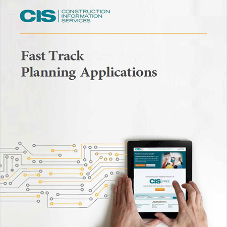Research has proven again and again that our environmental conditions can have a positive or negative effect on our health, wellbeing and productivity.
We know that environmental factors such as acoustic levels, air conditioning, heating, ventilation, lighting and interior design can affect our mood in work environment so surely the same goes for schools?
In this blog we wanted to explore the importance of a well-designed lighting system within schools, colleges and other educational facilities. Can good lighting improve the mood and productivity of students and does that then lead to better grades?
Firstly, what makes bad lighting? There are several factors that can contribute to bad lighting within the education sector, including:
Illuminance – the average light level in an area. Low illuminance can be linked to slow reading and reduced concentration where excessively high illuminance has been linked to reduced visual performance and hyperactivity.
Glare – when a bright image or object obstructs a student’s vision. Though glare can be physically compensated for it can lead to a lack of concentration in class as well as headaches, eyestrain and weakened productivity.
Flicker – when a light blinks on and off repeatedly, this can either be from a broken ceiling light or electrical device. Flicker can cause discomfort and irritation as well as, on a more serious level trigger conditions such as epilepsy.
Colour – colour is an important factor in lighting schemes for schools. Good colour balance can be really effective for learning.
Most of these problems are primarily caused by artificial lighting, but what can be done to combat them?
A good lighting scheme will make the most of available natural light and not rely too much on artificial substitutes. A study by the Heschong Mahone Group showed that students exposed to high levels of natural light were achieving test scores 18% higher than those who were exposed to minimal natural light.
Exposure to natural light results in increased performance, concentration and wellbeing, all things that are crucial for learning. The most advantageous in a classroom being increased concentration.
Increased light levels mean students do not need to strain their eyes and all effort can be put in to concentration and taking in information. From a scientific point of view more light means more cognitive space is free for processing, evaluating and remembering information.
Humans are biologically designed to feel more alert and awake when exposed to natural light, in an ideal world all schools and education facilities would be built and designed to incorporate natural light and though artificial lighting may help a little it doesn’t have the same effect.
But, we can’t tear down every old school in the UK and rebuild, so how can we utilise artificial light to increase productivity in schools?
One way around this would be to utilise LED lighting. Using LED lighting can help boost student’s learning performance and increase productivity.
The installation of LED lighting in the workplace has seen an uptick in staff productivity according to UK employers, so it is only natural that LED will have a similar effect on school and university students.
LED lighting can also help with student’s circadian rhythm as it is designed to mimic natural light. This reduces levels of tiredness throughout the day and allows students to remain alert for longer.
LED lighting also eliminates the risk of distracting bad-lighting factors such as poor illumination, glare, flicker and colour imbalance. LED lights do not flicker or buzz when close to death, the also remain brighter for longer.
In conclusion education facilities need to make the most of their natural light sources, in new builds this is easier to achieve as natural light can be implemented at the design stage. For older schools wishing to incorporate natural light where possible it would be possible to retrofit a new window scheme and even install rooflights in certain areas to increase natural light levels.
On a more basic and budget friendly level, making the switch to LED lighting can really benefit students and staff. Ensuring classrooms are well and evenly lit is also crucial to ensure maximum performance from the whole class. Making sure windows are not blocked where possible can also go a long way.
To find out more about construction in the education sector check out our Education Hub.






